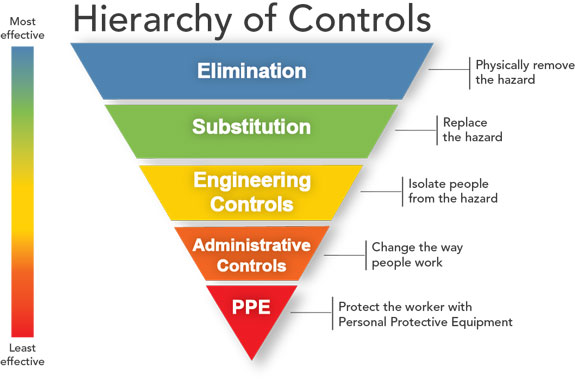On the back of a recent push to make swimming lessons a mandatory part of the primary school curriculum, an interesting idea floated past in my Twitter feed this week: why is there no push for compulsory personal floatation devices (PFD) in water-related areas?
Freestyle Cyclists has already considered this anomaly, but it's an intriguing comparison to unpack a bit more.
Personal protective equipment (PPE) is the lowest and least effective preventative measure on the hierarchy of hazard controls (usually applied in workplace safety):
 Methods at the top are generally more effective than those at the bottom
Methods at the top are generally more effective than those at the bottom
Some other control measures, higher on the hierarchy, are also at play here. Let's look at how they apply for people on (and near) water and people riding bikes on the road (and road-related areas):
| Control | On the road | On the water |
|---|---|---|
| Isolate | Protected separated bike lanes (optional and rare). | Secure pool fences (mandatory). |
| Admin | Minimum passing distance laws. Bike education. |
Separated boating and swimming zones (some beaches). Swimming lessons. |
| PPE | Bike helmets (mandatory). | PFD (mandatory in specific circumstances). |
Most glaringly obvious, is the lack of mandatory isolation of risk for cyclists. Providing secure pool fencing is just accepted as part of the cost of having a pool, but providing protected bike lanes is not accepted as part of the cost of having roads. A cynic would point to who has to foot the bill for the physical separation in either scenario.
At the administrative level of control we have some equivalence—separated boating and swimming zones are effectively minimum passing distance laws for boats. And bike ed and swimming programs are currently available but optional in the Victorian primary school curriculum (this may differ in other states).
When it gets down to PPE, regulations for the use of PFD on the water vary from state to state. Here's a summary of what applies in my state of Victoria:
The thing about the use of PPE in water safety is that it's only required where risk exists and other measures to eliminate that risk don't work. Pool fences and even strong swimming ability don't help someone who has capsized their boat out in the middle of the Bay. If not wearing a PFD, someone who goes overboard in open water is at a high risk of drowning—and rescue and recovery efforts on water are also dangerous.
But the roads are different. It is possible to isolate cyclists from many of the life-threatening hazards on the road and thus eliminate a huge amount of risk for riders. And although attending road trauma is not without risk for emergency service personnel, it's not complicated by happening on water.
So why the focus on mandatory PPE for cyclists on roads? As I've said before, the problem is that PPE often gets used as the first and only risk reduction measure. It puts all of the onus on the vulnerable to protect themselves from a threat that can be reduced or eliminated entirely by the other measures in the hierarchy of hazard controls. This is where the focus of campaigning efforts should be.
And this is why I get deeply frustrated by the strong support for mandatory helmet legislation by groups like the Royal Australasian College of Surgeons and emergency doctors. It's not their support for helmets per se, it's their support only for helmets.
Trauma surgeons and emergency doctors (as well as paramedics, nurses, and other emergency department staff) are at the pointy end of trauma care—often it must be unpleasant work, made more so when serious injury was avoidable. This gives the doctors a privileged and respected position from which to make public comment. So why do they not advocate for laws and road conditions that would help us to avoid trauma altogether, rather than focusing on what difference a helmet can make during and after a traumatic event?
In short, where is the support for preventive benefits of separated and protected bicycle lanes?